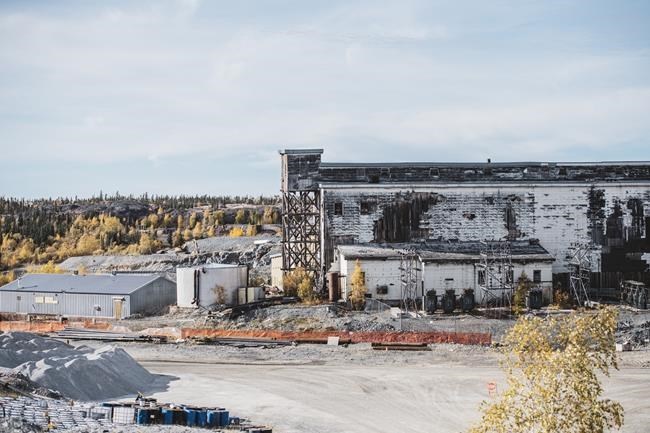YELLOWKNIFE — Cleanup of one of the most contaminated sites in Canada is estimated to cost taxpayers more than four times what was initially expected.
The Treasury Board of Canada recently approved a new $4.38-billion cost estimate for the remediation of Giant Mine, a former gold mine that operated from 1948 to 2004 within Yellowknife city limits.
The federally led project was estimated to cost just under $1 billion in 2013, but that did not take into account inflation, contingency and project management costs, as well as the fact that remediation plans have since expanded.
"We've heard from our rights and stakeholders and we've improved the project since the original cost estimate came out," said Natalie Plato, deputy director of the Giant Mine Remediation Project. "We think this is a very positive initiative for Yellowknife and the surrounding area."
Kevin O'Reilly, a member of the Northwest Territories legislature who was an intervener on the Giant Mine cleanup plan as an environmentalist, said he's not surprised by the new price tag.
"It's certainly a huge number, but it shouldn't really surprise anybody," he said. "Travel costs have been skyrocketing over the last while in terms of getting contractors and so on."
O'Reilly said he'd like to see a breakdown of the cost estimate. He said he had to push to find out the previous estimate, ultimately obtaining the figure by filing an access-to-information request.
The $4.38-billion cost estimate encompasses all spending on the remediation project since 2005 and projected future costs during active remediation.
While remediation was initially slated to be complete in 2031, that deadline has been pushed back to 2038. Some aspects of the project, however, such as the 237,000 tonnes of highly toxic arsenic trioxide dust stored underground at the site, will require perpetual care and maintenance.
O'Reilly said the costs for perpetual care will likely be significant.
Since the initial cost estimate was released, the project has undergone a water licence process and an environmental assessment, which resulted in 26 legally binding measures that had to be completed before remediation could proceed.
Other changes include the creation of an oversight board, community benefit and contribution agreements, as well as a health effects monitoring program to measure levels of arsenic and other contaminants in residents in Yellowknife, N'dilo and Dettah through biological sampling.
Plato said another change requested by stakeholders was filling in eight open pits at the site rather than leaving them open to protect the underground from flooding.
The scale of the mine cleanup is massive, with the site stretching more than 900 hectares. It also has 13.5 tonnes of contaminated soil, a landfill, six tailing ponds and 100 buildings, including an abandoned townsite where the former homes of workers contain asbestos.
Remediation work over the next decade is to include construction of a new water treatment plant, deconstruction of the old townsite, underground stabilization using a mixture of cement, tailings and chemical additives, and freezing of underground arsenic chambers using 858 thermosiphons, which are basically long tubes filled with pressurized carbon dioxide.
This report by The Canadian Press was first published Nov. 10, 2022.
___
This story was produced with the financial assistance of the Meta and Canadian Press News Fellowship.
Emily Blake, The Canadian Press


